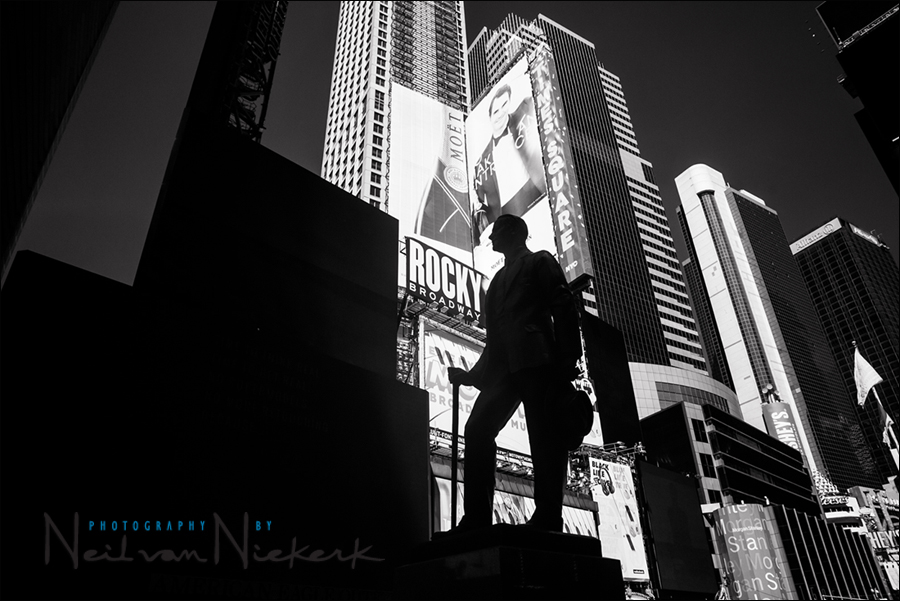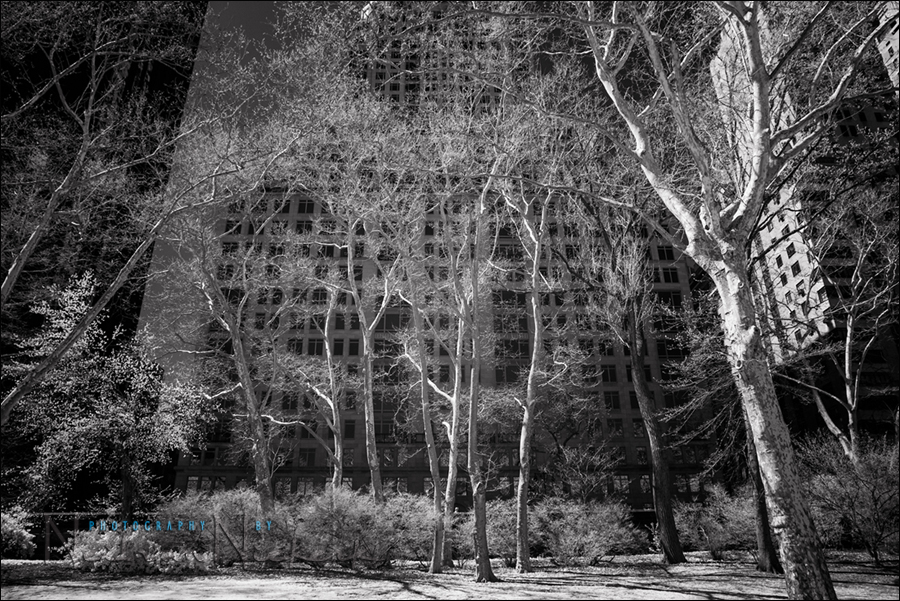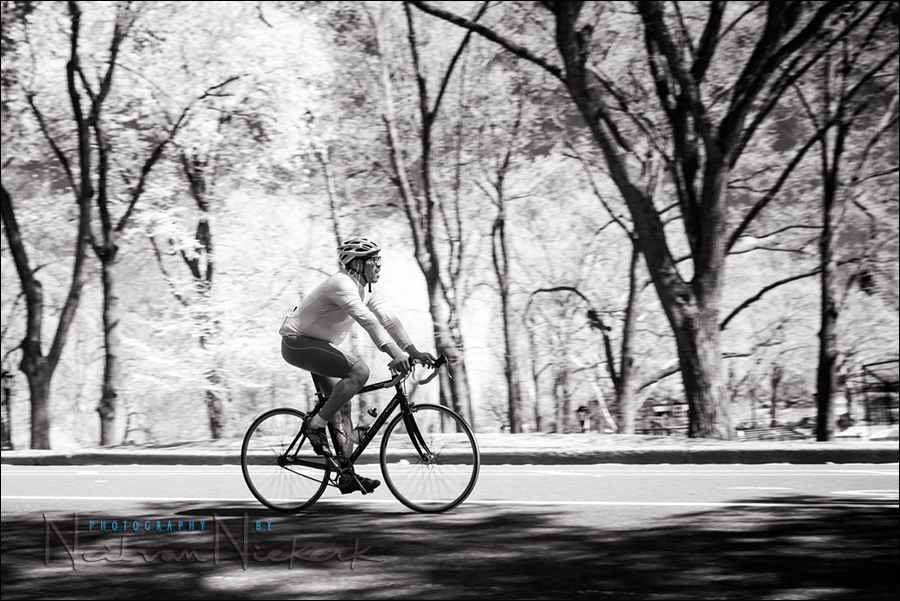
B&W infrared photography – Urban landscapes
Funny how personal projects often work – there’s the initial enthusiasm, and then life and work takes over. Last year I bought a used Canon 5D mark II that had been converted to Infra-Red. I did take it out twice for walkabouts in New York – and posted the initial results. But then the work-load added up, and then a particularly harsh winter where it was just too miserable outside to go exploring in the city – and I never took it out again, until now. With the weather improving now and the sun shining, it was just a good time to go out and shoot for fun again.
A photographer friend, Amanda Stevens, joined me with her Fuji X20 that had been converted to deep Infra-Red … and we went exploring in Manhattan. One trick that Amanda showed me that should’ve been so obvious to me from the start – since you can’t really meter for infra-red, it made sense to view the scene via Live-View, and then adjust the camera settings until it looked good on the back of the screen. So obvious, and yet, I still worked within the old-school mindset of looking through the viewfinder, and trying to read the scene.
The image at the top was taken at Columbus Circle, NYC – the bit of green shrubbery started to turn white where the sun hit it. The sun behind the globe also gave a glow to the image.
- Canon 5D mark II (830nm deep B&W IR conversion by Life Pixel)
- Canon 24-70mm f/2.8L II (B&H / Amazon)
- 1/50 @ f/16 @ 1600 ISO
Here are some of the other images that also worked particularly well:

The building on the left was in shade, so it went black.
The blue sky too went very dark, because little infra-red is reflected.
- Canon 5D mark II (830nm deep B&W IR conversion by Life Pixel)
- Canon 24-70mm f/2.8L II (B&H / Amazon)
- 1/160 @ f/8.0 @ 800 ISO

The statue in the middle of Times Square, near the red steps. The giant electronic billboards (to the left here), are completely black in the frame, since apparently they don’t emit infra-red! Just the sun-lit areas are exposed. In this way, working with infra-red in an urban area is quite unpredictable.
- Canon 5D mark II (830nm deep B&W IR conversion by Life Pixel)
- Canon 24-70mm f/2.8L II (B&H / Amazon)
- 1/200 @ f/5.6 @ 800 ISO

Going more towards the classic use of infra-red, with a landscape in Central Park.
The trees are ghostly white, even without much foliage.
- Canon 5D mark II (830nm deep B&W IR conversion by Life Pixel)
- Canon 24-70mm f/2.8L II (B&H / Amazon)
- 1/200 @ f/6.3 @ 800 ISO

- Canon 5D mark II (830nm deep B&W IR conversion by Life Pixel)
- Canon 24-70mm f/2.8L II (B&H / Amazon)
- 1/250 @ f/5.6 @ 1000 ISO

- Canon 5D mark II (830nm deep B&W IR conversion by Life Pixel)
- Canon 24-70mm f/2.8L II (B&H / Amazon)
- 1/80 @ f/2.8 @ 1600 ISO
Converting your camera for Infra-Red capture
If the look of Infra-red photography appeals to you, then you can have your camera converted by Life Pixel. On their website they list all the options, as well as which cameras are suitable, and which lenses might be a problem. There’s a ton of useful information on infra-red photography. Check them out!
Love that last image…something rather disturbing about it…great composition Neil.
4 is a fantastic photo–particularly the way the textures of the trees + background buildings melt into each other.
I also like the meta nod in the last, superimposing your presence (your eye on the scene as well as ours) and the poster version on the scene. Yikes–it looks like eyes don’t only point outward !
Hi, excuse me for lack of knowledge since I do mostly color photography for non-profit org. What’s difference b/t infrared camera vs shooting or converting to black/white ? tks,
Infra-red cameras (and film) only register the Infra-Red spectrum, and little or no of the actual light. So the scene you are photographing becomes other-wordly. Green foliage turn white, blue skies become much darker, and skin tones are lighter.
You have plug-ins in Photoshop that change color images into pseudo-infra-red, but that is a compromise. What you miss out on is the interesting stuff, like the LED billboards here going completely black. Photoshop won’t know it has to do that:
Or to turn this policeman’s uniform into white:
And that’s where the adventure lies …
Some very nice captures Neil! Something different always welcome ;)
Thanks Neil. Very nice pictures !!!
What a great idea to use infrared photography for street photos, nice! Now I see the main advantage of a converted camera instead of a filter which I currently have: I like how dynamic motifs can you capture. I’m usually shooting landscapes, that’s my best relax, but I’m thinking of buying a converted DSLR to have more possibilities… By the way, I guess some of these pictures would be also interesting in colour version, I’d love to see the one with the cyclist.
Here is the iPhone photo of the same scene, just as a reference to what the billboards looked like in color. The banding there is due to the scan-rate of the bill-boards, as captured by the iPhone.